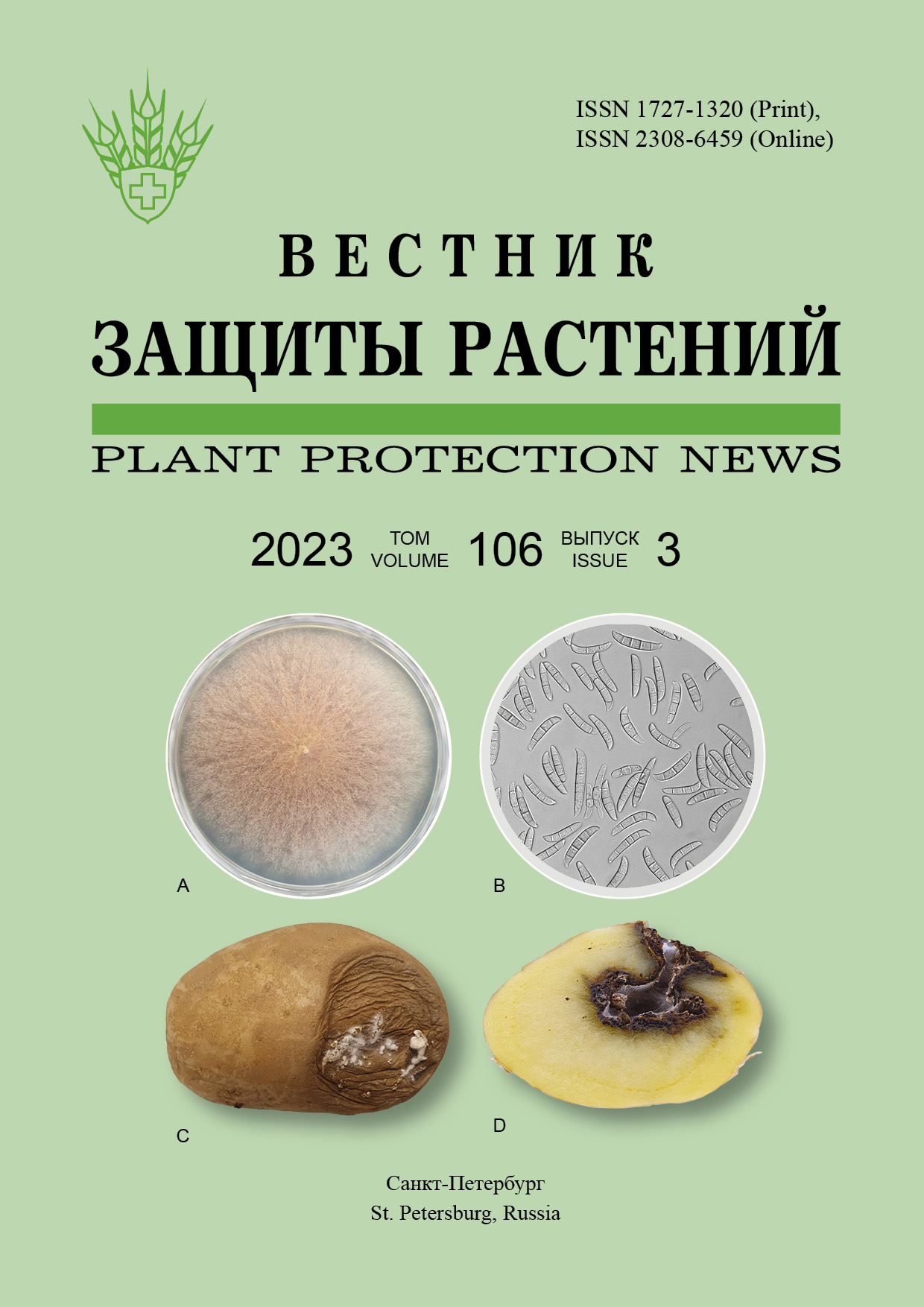Biotic potential of Transeius montdorensis (Acari: Phytoseiidae) under technocenosis conditions
Keywords:
Transeius montdorensis, Phytoseiidae, mass rearing, population growth rate, humidityAbstract
The subtropical mite species Transeius montdorensis is widely used to control thrips and other sucking pests in European countries. To develop a domestic technology for the mass rearing of T. montdorensis, its biotic potential has been evaluated under large scale production. The growth rate of T. montdorensis is 0.19±0.017, the doubling time is 4.7±0.29 days at 26–27 °C. In the tested range of mite densities (5–80 ind./ml), the growth rate tends to decrease as the density increases. This trend can be approximated by a logarithmic curve. The density 60–80 ind./ml causes not only a significant drop in the population growth rate but also the decrease in range of its fluctuations. Higher fluctuations of growth rate at lower predator densities (5–15 ind./ml) are probably due to the fact that, in some containers, the predator is unable to hold back outbreaks of its prey (the flour mite Tyrophagus entomophagus). As a result, the prey overpopulates the substrate, which causes its contamination by waste products stimulating microflora development. The growth rate in the density range of 5–15 ind./ml is lower than expected and does not differ significantly from that in the range of 20–30 ind./ml. This indicates that the prey uncontrolled growth inhibit the reproduction of T. montdorensis. The population doubling time is a reliable indicator for screening the best stock culture of T. montdorensis for its successful rearing up to density 60 ind./ml within 6–8 days, i.e., before mass growth of fungi in the substrate. The range of 20–30 ind./ml is the optimal starting density for mass rearing, and when the predator reaches a density of more than 60 ind./ml, it should be resettled or offered for sale.



